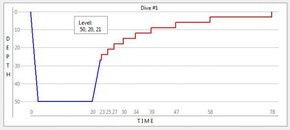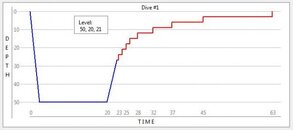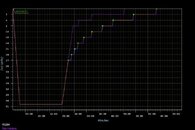An "algorithm" sounds very scientific, but don't confuse precision with accuracy. They are all compiled by reverse engineering incidence of DCS into mathematical formulae.
But as everyone knows there are huge random elements you cannot account for. Anecdotally people tend to get "skin bends" before they get "joint bends". But there are any number of incidents where people have had joint bends without any skin presentation. Similarly "the chokes" is pretty rare, but again, has been known to occur without other symptoms presenting. If the rate at which tissue absorbed and off-gassed was linear, that should never happen - symptoms would always present in order. But they don't. There is simply a randomness to incidents of DCS that we can't fully account for. Hence algorithms which are designed to be a "best guess".
But as everyone knows there are huge random elements you cannot account for. Anecdotally people tend to get "skin bends" before they get "joint bends". But there are any number of incidents where people have had joint bends without any skin presentation. Similarly "the chokes" is pretty rare, but again, has been known to occur without other symptoms presenting. If the rate at which tissue absorbed and off-gassed was linear, that should never happen - symptoms would always present in order. But they don't. There is simply a randomness to incidents of DCS that we can't fully account for. Hence algorithms which are designed to be a "best guess".






